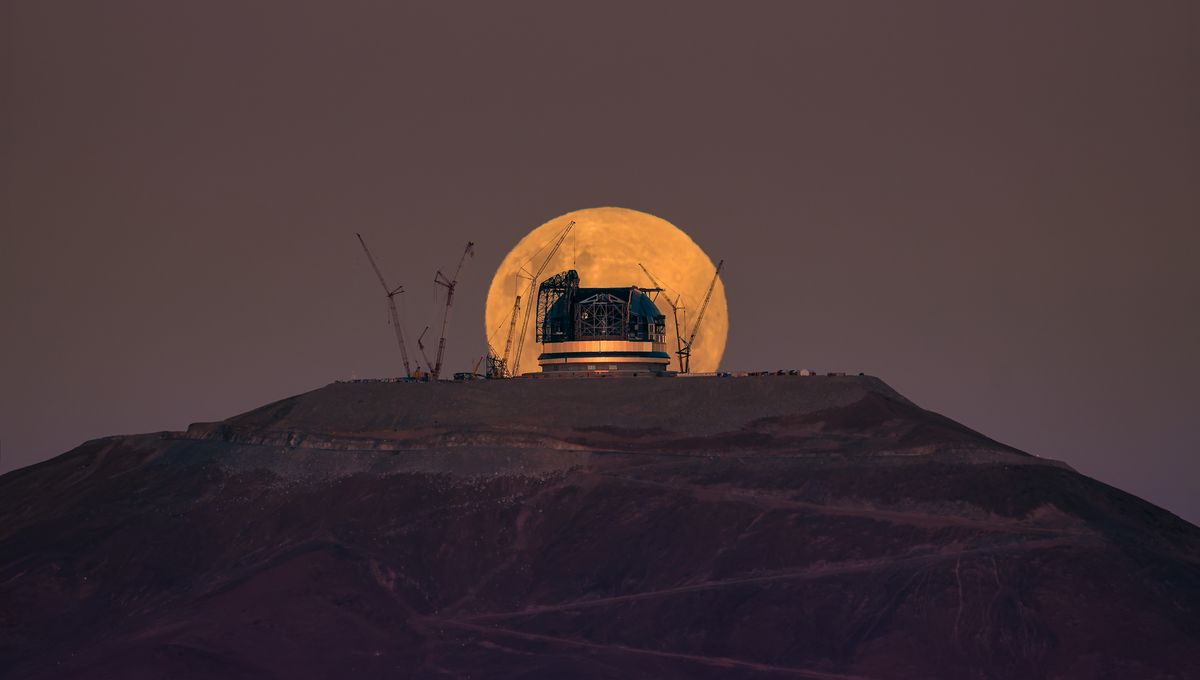
If there is life on Proxima Centauri b, it could take the Extremely Large Telescope as little as 10 hours to detect its influence on the planet’s atmosphere. Observations will take longer for planets orbiting more distant stars (ie all the others), but modeling undergoing peer review is encouraging about how quickly the giant telescope could answer one of humanity’s great questions, provided we pick the right target.
ADVERTISEMENT
Three giant telescopes, each much larger than any currently in operation, are under development, although there are big questions over whether all three will be completed. The largest and most advanced is the European Extremely Large Telescope (ELT), which has been under construction since 2017, and is scheduled to make its first observations in 2029.
One of the ELT’s highest priorities is to look for “biosignatures” – chemicals that indicate the presence of life – in the atmospheres of exoplanets (those orbiting stars other than the Sun). JWST is searching for these too, and there are highly disputed claims it has found some. However, it’s possible, that JWST does not collect enough light to make confident detections of the subtle chemical changes astrobiologists are looking for.
Bigger mirrors are needed, and the ELT will have one, with its 39-meter (128-foot) diameter giving it access to 37 times as much light as JWST. Even when you allow for the interfering effects of Earth’s atmosphere above the ELT’s site at Cerro Amazones, Chile, that could make all the difference.
At least that is the hope, but we can’t be sure until operations start and the first observations are made. Nevertheless, Dr Miles Currie and Professor Victoria Meadows of the University of Washington have attempted to model its capacity when looking at known planets within about 16 light-years of Earth.
Most impressively, Currie and Meadows consider the harder part of the telescope’s role to be studying non-transiting planets. When planets pass between us and their star (transit) the star’s light shines through any atmosphere they may have. Molecules in that atmosphere block specific wavelengths, creating a fingerprint we can recognize. JWST has already done this with several gas giants unsuitable for life. It’s also looked at certain rocky planets, but sadly found no evidence for atmospheres in those cases.
When planets don’t transit from our perspective, the task is more difficult. To determine the makeup of their atmospheres, we have to look at the light they reflect, and distinguish it from the star’s direct light, which will be tens of thousands of times brighter.
ADVERTISEMENT
Yet challenging as this is, Currie and Meadows calculate it would take as little as 10 hours of observations to work out the ratio of oxygen to methane or carbon dioxide to methane in Proxima Centauri b’s atmosphere, assuming it has one.
These ratios are very important because oxygen is highly reactive and will not remain in an atmosphere, particularly one containing a lot of methane, without constant replenishment. It’s hard to imagine what the source of this oxygen could be, if not photosynthesizing life forms, unless giant oceans are slowly evaporating. The CO2/CH4 ratio can provide a check on whether that is the explanation, and the authors argue it will also be easier to measure.
There is a high chance Proxima Centauri b doesn’t have an atmosphere at all. Its star, although faint, undergoes a lot of flares that have probably stripped such a close-in planet of its atmosphere long ago.
However, we know of a lot of better prospects that are still fairly close to us. The extra distance means less of their reflected light reaches us, so the ELT will need to stare at them longer to collect enough, but it’s still a surprisingly short period.
ADVERTISEMENT
That doesn’t mean we can expect to find life within the first few nights after the ELT starts operation. For one thing, probing planetary atmospheres is only one of the many purposes for which it was built, and researchers will have to compete for time on it.
Moreover, there’s no reason to think we will hit paydirt on the first planet we observe in this way. Many hours may be spent on worlds that disappoint before we hit the right one – still, we can dream.
Moreover, finding life is not the only reason to explore the atmospheres of planets like these. The authors note that we are not even completely sure Proxima Centauri b is a rocky planet at all – it could be a sub-Neptune, a not-so-giant version of the gas giants. Answering the Earth-like or sub-Neptune question could take the ELT around an hour for Proxima Centauri b, and not much longer for other planets currently under question, they calculate.
In a very short time, our knowledge of nearby worlds, the places we will land first if humanity ever ventures to the stars, could expand dramatically.
ADVERTISEMENT
The analysis was all done on M-type (red dwarf) stars. Although these make up the bulk of nearby stars, questions remain about their suitability as hosts for life. The authors didn’t consider how long it would take to study planets around G-type stars, the one star type we know definitely can have life around it, such as Tau Ceti, nor K-type stars like Epsilon Eridani. Each of these is less than three times as distant as Proxima Centauri, but with both stars being much brighter it will be harder to spot reflections from any planets against the glare.
The study has been submitted to the Planetary Science Journal, a preprint is available on arXiv.org.
[H/T: Universe Today]
Source Link: A Telescope Is Taking 12 Years To Build But Could Find Extraterrestrial Life In Hours